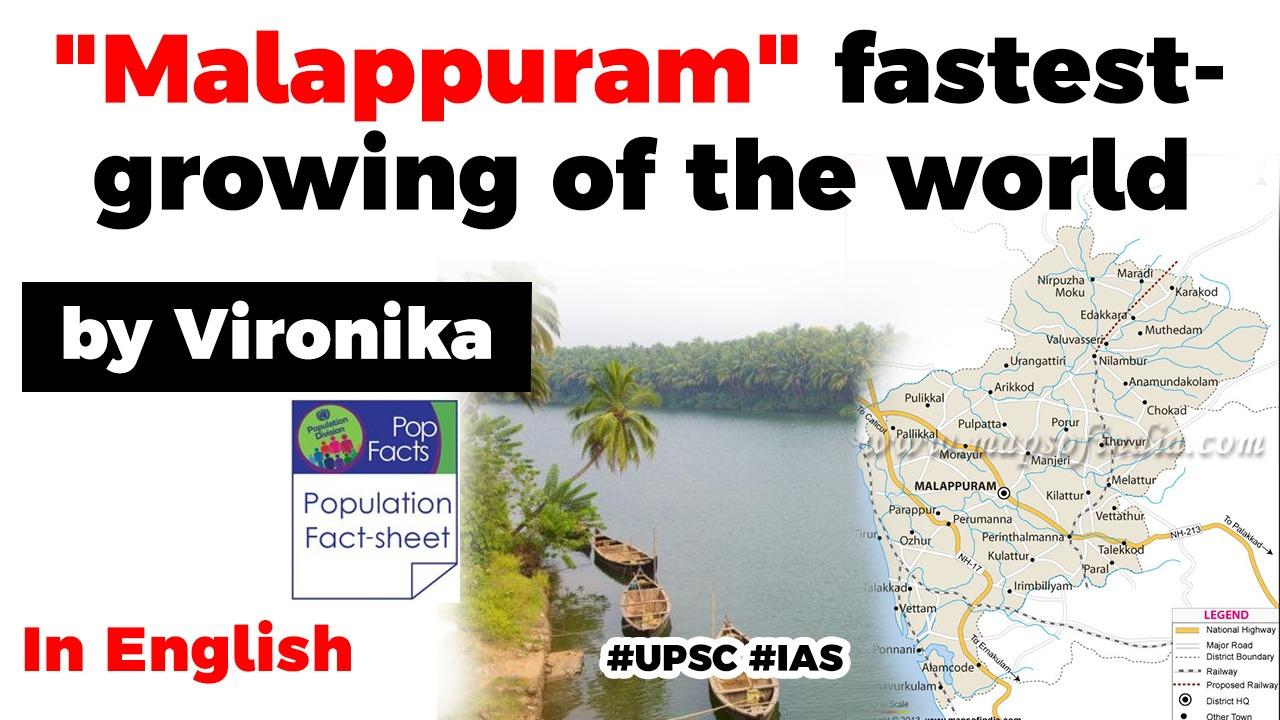Table of Contents
Context
- The Economist has put Malappuram at the top of the “Top ten fastest-growing cities” in the world.
- The total fertility rate (TFR, the number of children a woman is likely to have in the childbearing age of 15-49) in Kerala is 1.8 as per NITI Aayog data from 2016 — below the replacement rate of 2.1.
- The Census defines a UA as “a continuous urban spread consisting of a town and its adjoining urban outgrowths or two or more physically contiguous towns together”.
- Data on India and many other countries were not available for 2015 (the last Census in India was in 2011), the UN report used projections of UAs’ populations — estimates based on past population growth data.
- The rate of growth between 2015 and 2020 thus calculated provides a measure of the pace of urbanisation.
- Urban populations can grow when the birth rate exceeds the death rate when workers migrate to the city in search of jobs; when more areas get included within the boundaries of the city; or when existing rural areas are reclassified as urban.
- The low fertility rate in Kerala means the increase in the population of Malappuram and other cities is not because women are having more children; rather it is because more villages are being transformed into towns, and city borders are expanding.
- These cities are seeing rapid urbanisation, and the main reason is the inclusion of new areas in the UA’s limits.
- In 2001, there were two municipal corporations within the UA of Malappuram. In 2011, the number of municipal corporations had doubled to four, and an additional 37 CTs were included within Malappuram.
- In Kerala, urbanisation is driven by a move away from agriculture, which leads to a change in a village’s Census classification status.
- This is evident from the large number of CTs that were included in the UAs of the state since the last Census. On the other hand, except Delhi, the more populous cities in the North had fewer CTs in 2011.
- Unplanned urbanisation can be “exclusionary”, making it difficult for migrants to live there given the high cost.
- Unregulated housing, lack of reliable public transport, and longer commutes within these towns puts a strain on the meagre resources of migrants.
Problems of Urbanisation
- Urban area is where most of people work in secondary or tertiary (service) sectors.
- Urban areas include statutory towns, census towns and outgrowths.
- Increase in size of cities is usually not substantially due to high birth rate, though total births in a city do have a bearing on the growth.
- Migration (both from rural and other urban areas) contributes hugely in population growth in cities.
- Migration from villages (rural to urban migration) or from small towns (urban to urban) given a fixed population size for a period in a specific city
- Noise Pollution
- Air Pollution
- Water Scarcity
- As directed by NGT, all diesel vehicles of 15 years of age or more should not be allowed in cities.
- Rain water harvesting should be popularised by giving subsidies; and all old ponds/ tanks should be revived
- There should be a ban on use of high power loud speakers, D.J. etc. in residential and institutional areas to check noise pollution
- Improve the quality of life by developing the social and the physical infrastructure.
- Reduce poverty and vulnerability of the urban poor households by enabling them to access gainful selfemployment and skilled wage employment opportunities can help in tackling the issues related to urbanization.
Latest Burning Issues | Free PDF






















 WhatsApp
WhatsApp